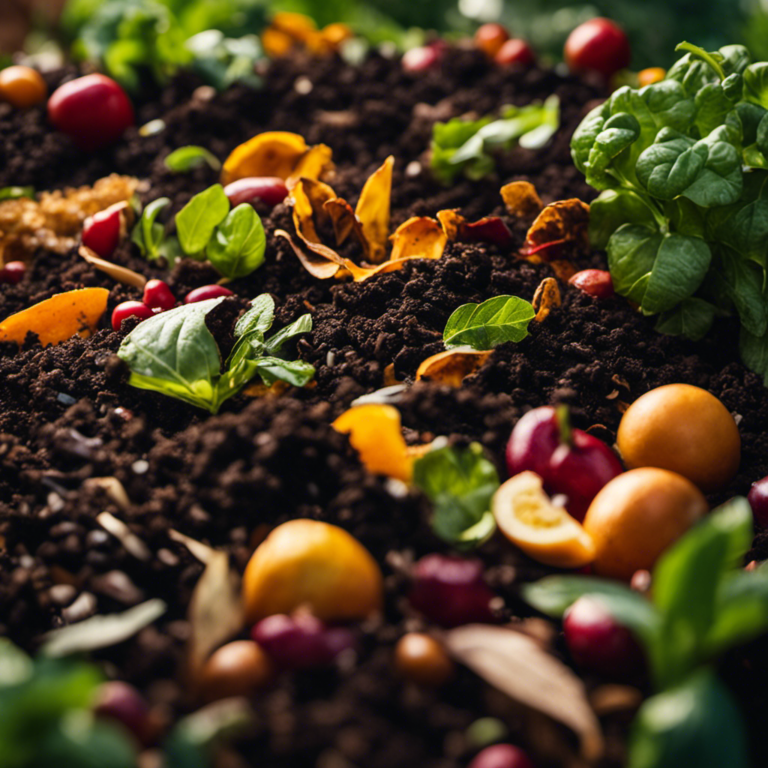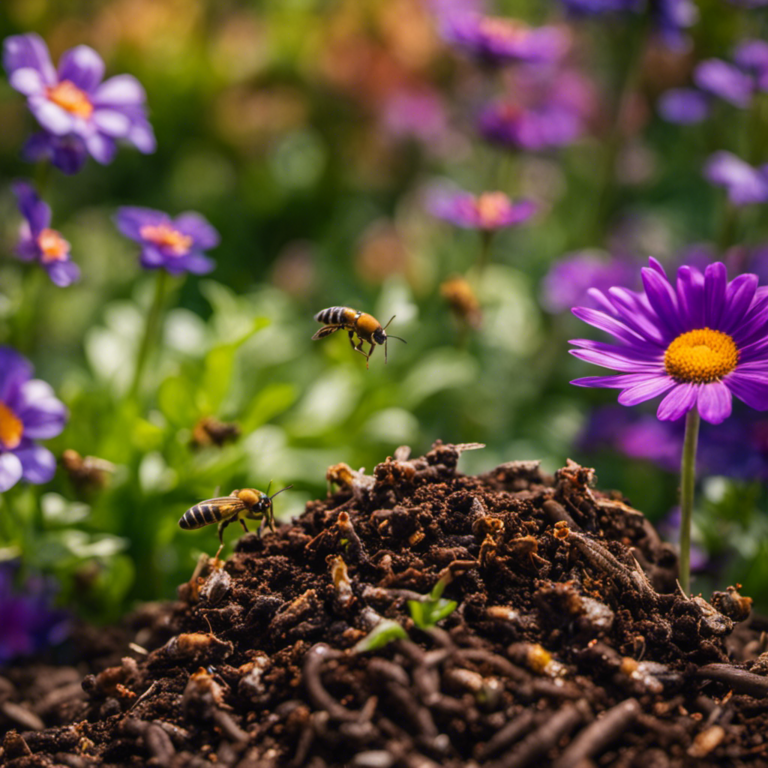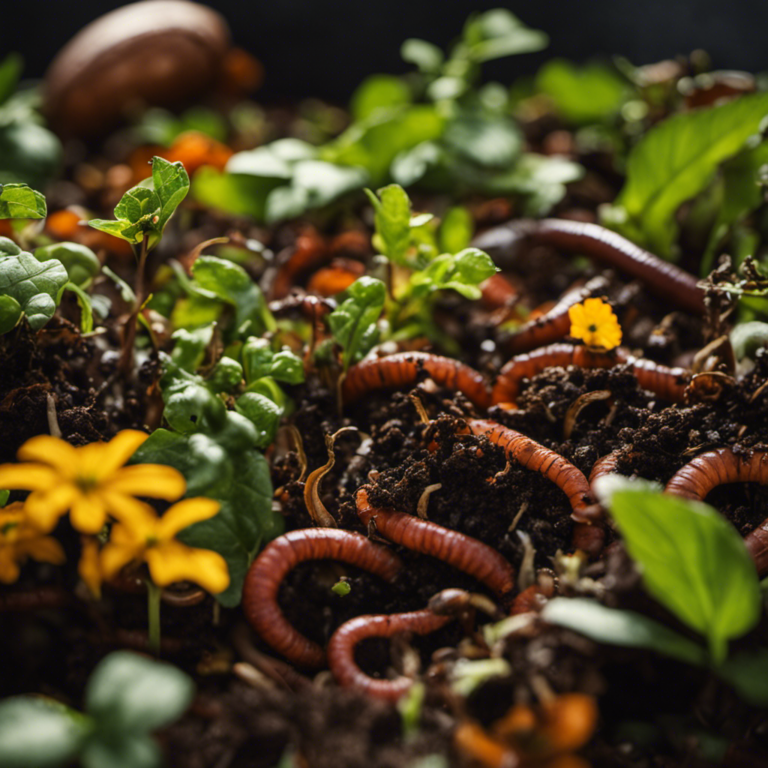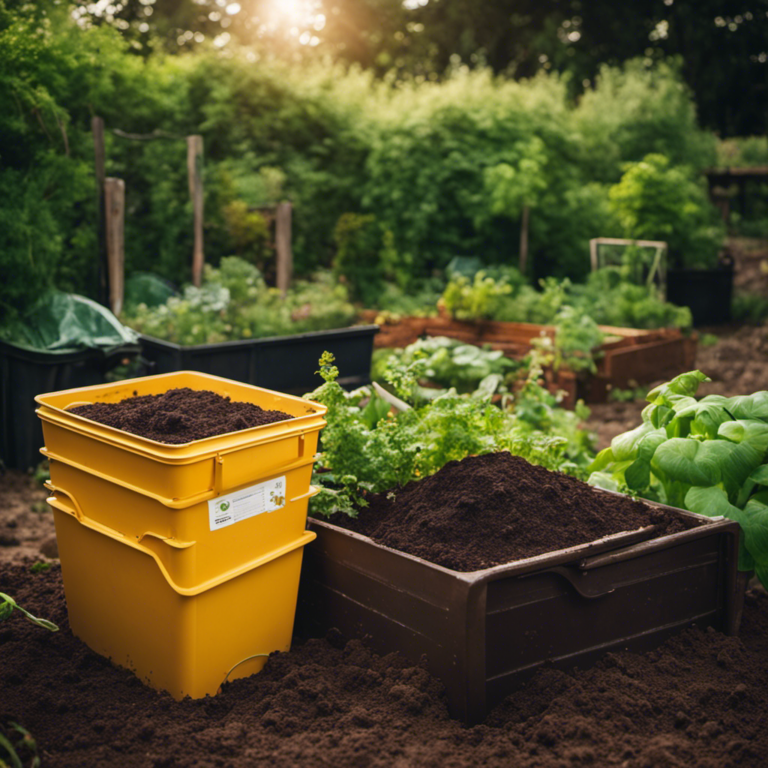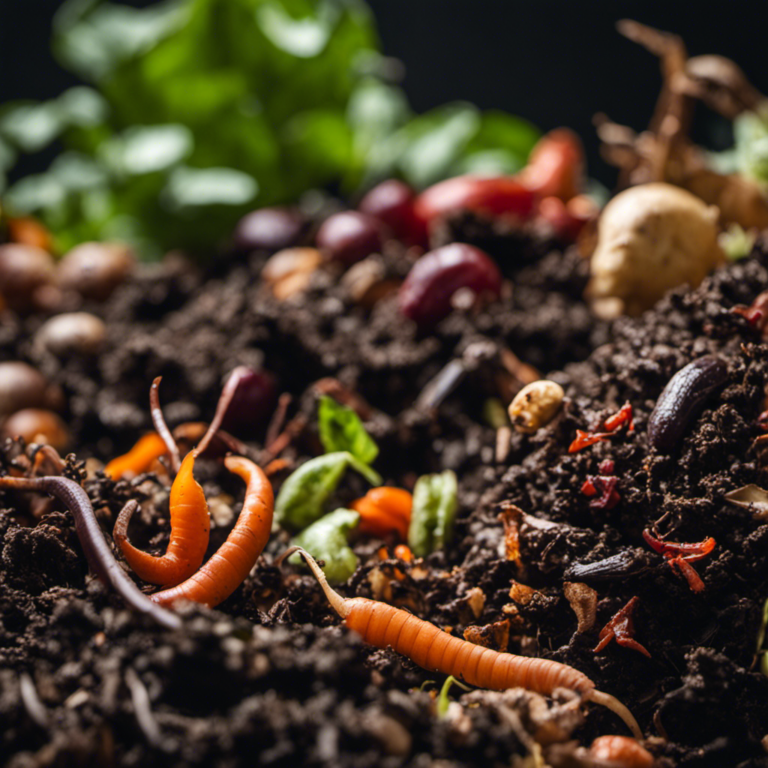Hey there!
Are you looking to improve your composting skills and have a positive impact on the environment? Well, you’re in luck because in this article, I’ll be sharing some effective organic composting methods that you can start using today.
Whether you’re experienced or just starting out, I’ve got you covered with practical tips and tricks to help you maintain a healthy compost pile.
So, let’s get started and explore how easy and rewarding composting can be!
Key Takeaways
Organic composting is a valuable technique for cultivating a thriving garden. Similar to how a chef combines ingredients to create a delicious dish, composting involves carefully blending components to produce nutrient-rich soil.
By following the methods and tips outlined in this article, you’ll be on your way to maintaining a healthy compost pile and enjoying the rewards of a bountiful harvest.
So, let’s explore the benefits of organic composting and how it can enhance your garden.
Benefits of Organic Composting
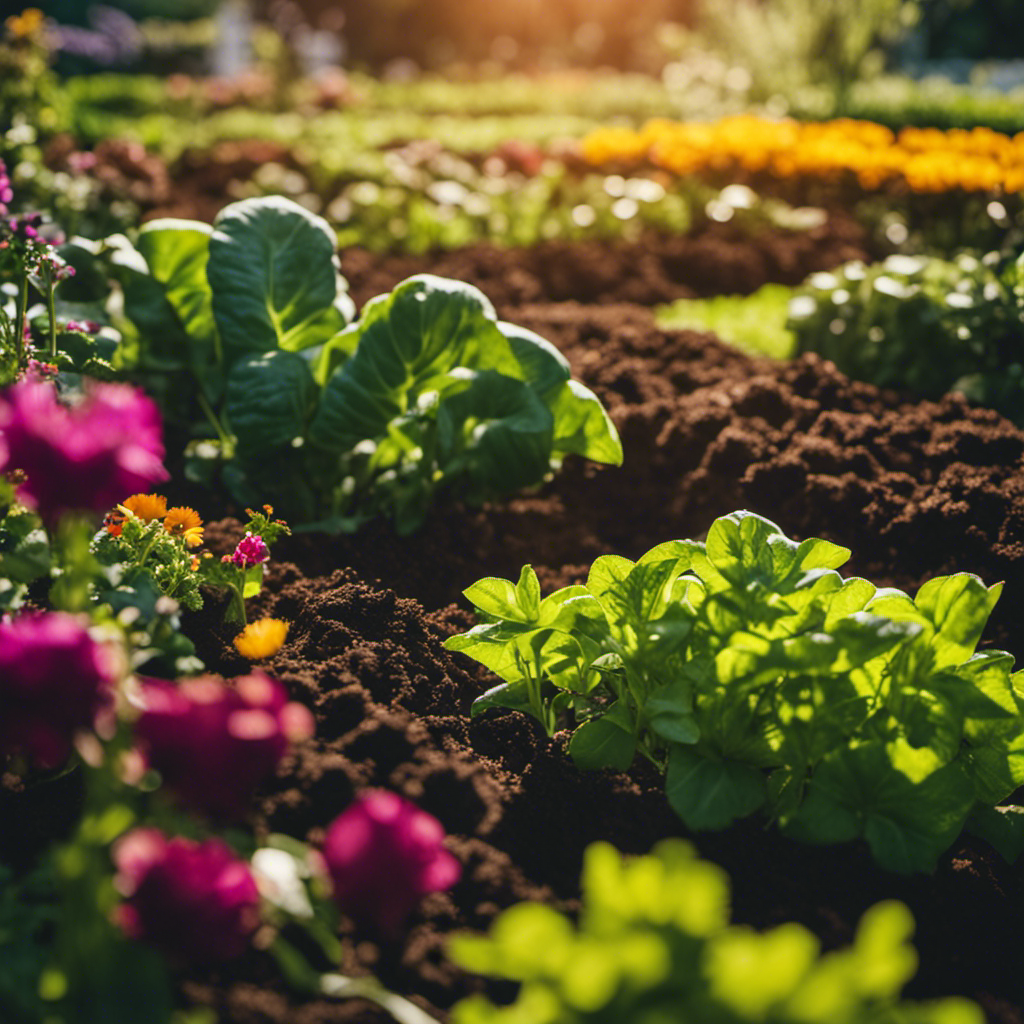
I have personally experienced the many benefits of organic composting. Not only does it help reduce waste and the use of landfills, but it also provides a natural and nutrient-rich soil amendment for gardening and landscaping. Using compost in your garden has numerous advantages.
It improves soil structure, making it easier for plants to establish strong roots and access essential nutrients. Additionally, compost enhances water retention, reducing the need for frequent watering and helping plants withstand drought conditions. It also suppresses weed growth, minimizing the need for harmful chemical herbicides.
Getting started with your own compost pile is easier than you might think. Begin by choosing a suitable location in your yard or garden, one that’s easily accessible but not visible, as composting can sometimes be seen as unsightly. Next, gather organic materials such as fruit and vegetable scraps, coffee grounds, yard waste, and shredded newspaper. Avoid adding meat, dairy products, and oily foods, as they can attract pests. Layer these materials in your compost pile, ensuring a balance of nitrogen-rich greens and carbon-rich browns. Regularly turn the pile to promote decomposition and airflow. With time and patience, you’ll have nutrient-rich compost to use in your garden.
Essential Components for Successful Composting
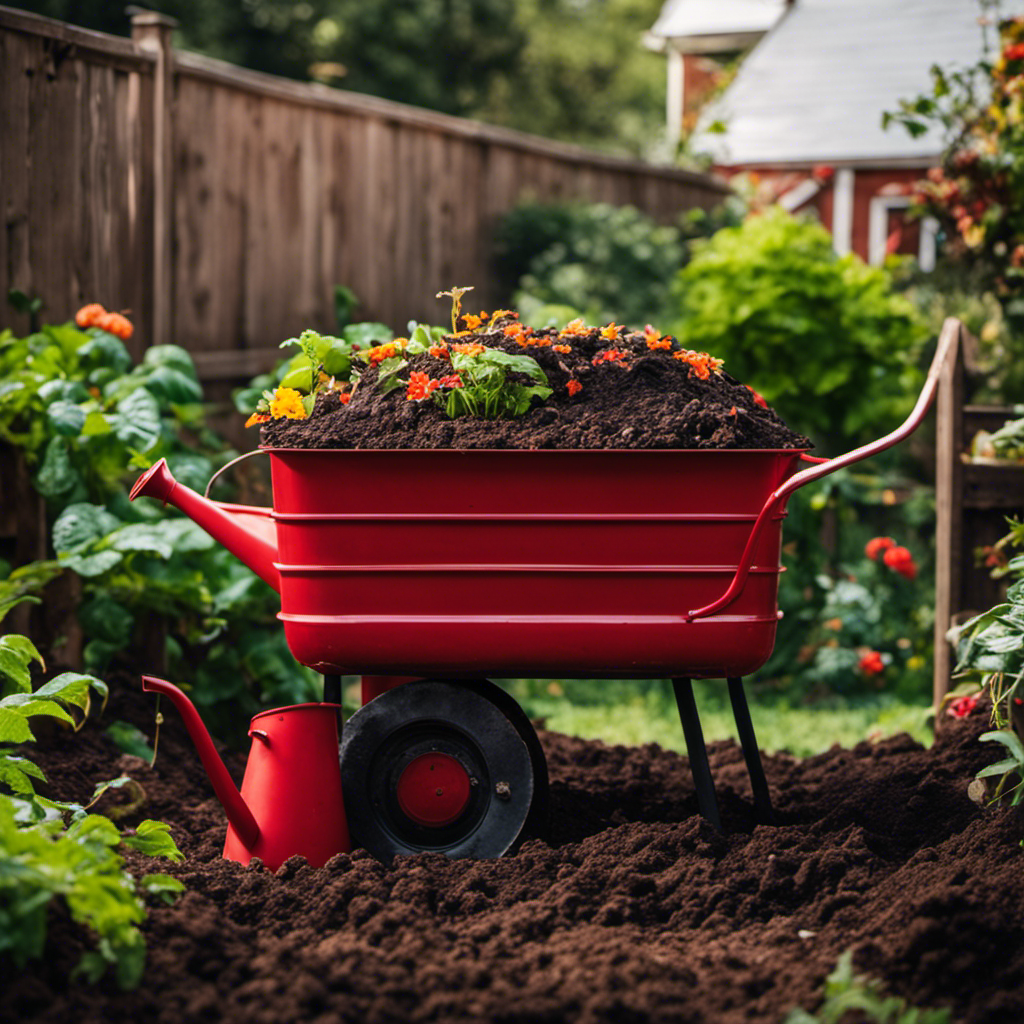
Essential Components for Successful Composting
To ensure successful composting, there are three key components that play a crucial role: proper balance, regular turning, and adequate moisture. These components create an optimal environment for the decomposition of organic matter, leading to effective composting.
Proper balance refers to achieving the right ratio of green to brown materials in your compost pile. Green materials, like grass clippings and kitchen scraps, provide nitrogen, while brown materials, such as dried leaves and twigs, supply carbon. Finding the right balance between these two types of materials is essential for efficient decomposition.
Regular turning is another important aspect of successful composting. By regularly mixing the contents of your compost pile, you promote aeration and ensure that all materials receive an even exposure to oxygen. This helps speed up the decomposition process and prevents the formation of anaerobic conditions that can result in unpleasant odors.
Adequate moisture is crucial for successful composting. Your compost pile should be moist, but not overly wet. To check the moisture level, simply squeeze a handful of compost. It should feel like a damp sponge. If it’s too dry, add water; if it’s too wet, add more dry materials.
To improve aeration, you can consider using a composting bin with air vents or employing aeration techniques like turning with a pitchfork or using a compost aerator tool. These methods enhance airflow and prevent material compaction. Composting bins also help contain the compost pile, making it easier to manage and control the decomposition process.
By incorporating these essential components into your composting routine, you can create nutrient-rich compost to nourish your plants and contribute to a healthier environment.
Different Methods of Organic Composting
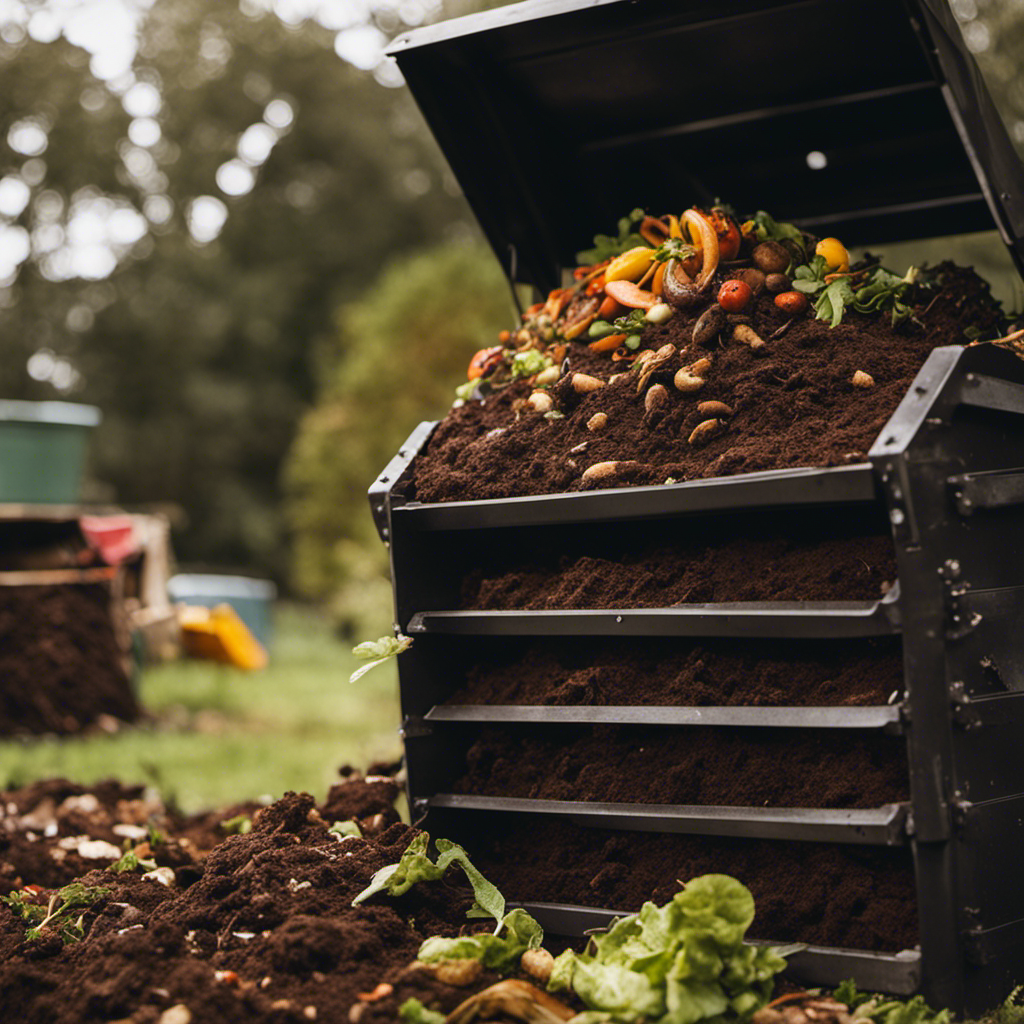
Different Methods of Organic Composting
Let’s explore three different methods of organic composting that are easy to implement in your own backyard.
The first method is aerobic composting, which involves creating a compost pile that allows for the circulation of air. This method requires regularly turning the pile to ensure proper aeration and decomposition. By maintaining the right balance of carbon-rich (brown) and nitrogen-rich (green) materials, such as leaves, grass clippings, and kitchen scraps, you can create nutrient-rich compost in a matter of weeks.
The second method is vermicomposting, also known as worm composting. This method utilizes earthworms to break down organic waste into nutrient-rich compost. To start vermicomposting, you’ll need a worm bin, bedding material such as shredded newspaper or cardboard, and red worms. By adding kitchen scraps, coffee grounds, and other organic materials to the worm bin, the worms will consume the waste and convert it into high-quality compost. It’s important to maintain the right moisture and temperature levels for the worms to thrive and ensure successful decomposition.
Lastly, you can also try trench composting, which involves digging a trench in your garden and burying organic waste directly into the soil. This method is particularly useful for disposing of large amounts of kitchen scraps or yard waste. By burying the organic matter, you allow the soil organisms to break it down gradually, enriching the soil in the process.
Tips for Maintaining a Healthy Compost Pile
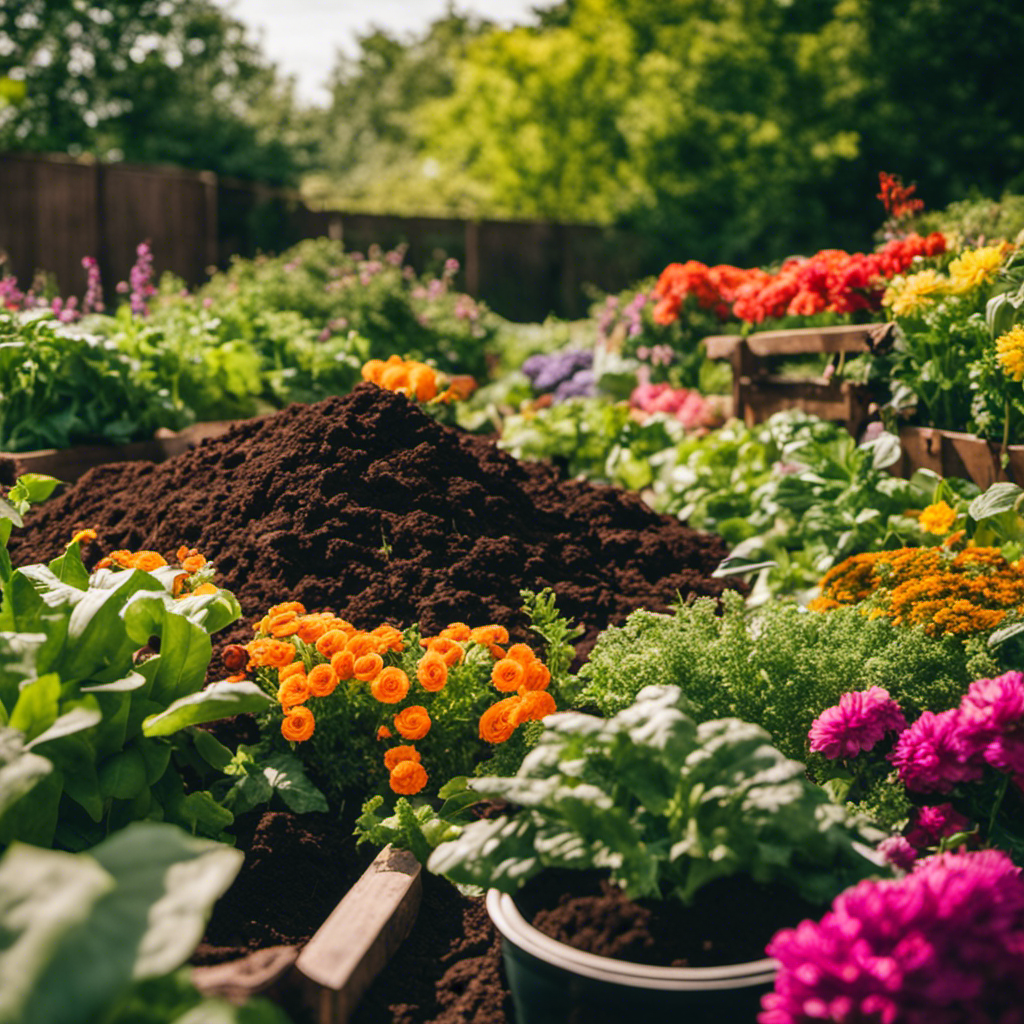
As we continue our exploration of organic composting methods, let’s discuss some helpful tips for maintaining a healthy compost pile. Keeping your compost pile in good condition is vital for producing nutrient-rich compost that will benefit your garden or plants. Here are practical tips to ensure your compost pile stays healthy and productive:
-
Moisture control: Regularly check the moisture content of your compost pile. It should be damp, like a wrung-out sponge. If it’s too dry, add water; if it’s too wet, add dry materials like leaves or straw.
-
Turning the pile: Regularly turn or aerate your compost pile to promote decomposition. This helps distribute oxygen, prevent odors, and speed up the breakdown process. Use a garden fork or compost turning tool for best results.
-
Balancing carbon and nitrogen: Maintaining the right balance of carbon-rich (brown) and nitrogen-rich (green) materials is crucial for successful composting. Aim for a ratio of about 3 parts carbon to 1 part nitrogen. Brown materials include dried leaves, straw, and shredded paper, while green materials include grass clippings and kitchen scraps.
-
Using composting equipment: Consider using composting equipment like compost bins or tumblers to help contain and manage your compost pile. These tools provide a controlled environment, promote faster decomposition, and make it easier to turn or aerate the compost.
By following these tips and employing proper composting techniques, you can maintain a healthy compost pile and produce high-quality compost for your garden.
Happy composting!
Troubleshooting Common Composting Issues
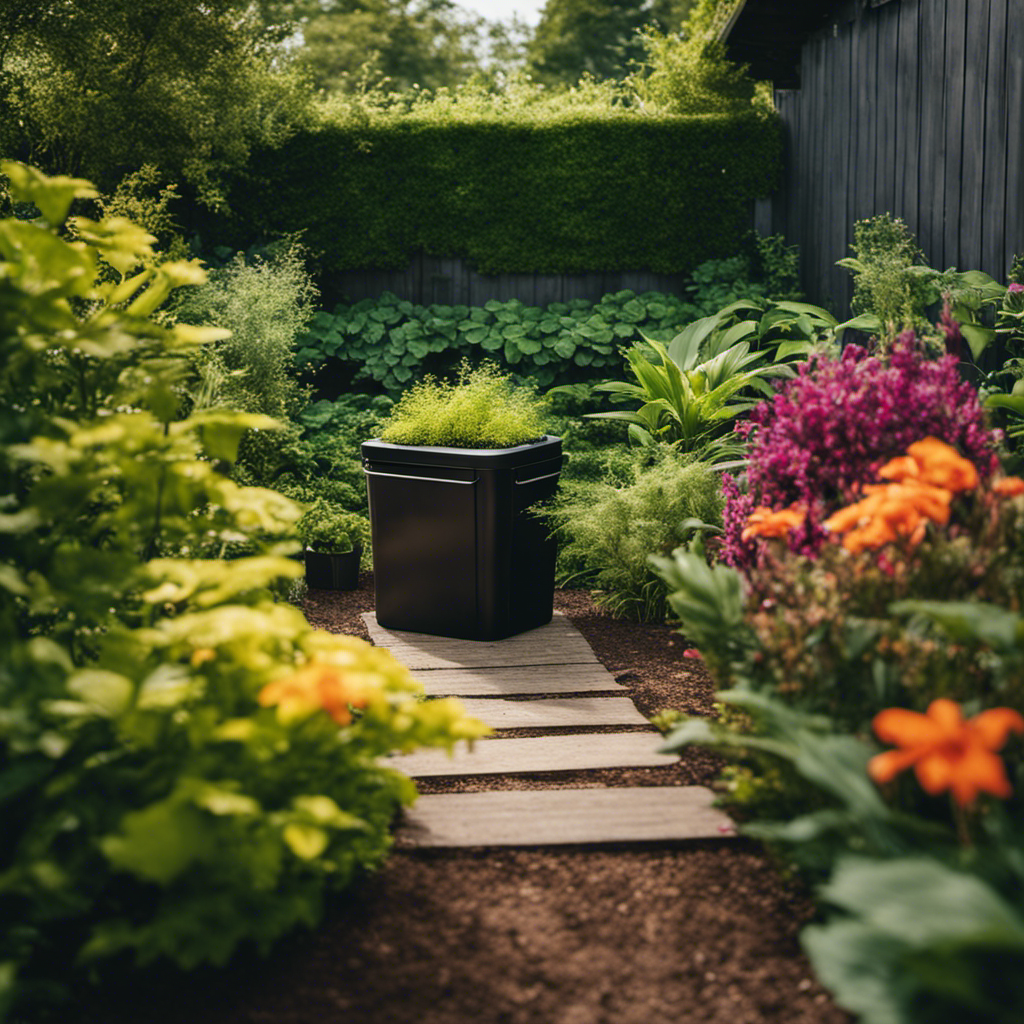
Troubleshooting Common Composting Issues
I encountered several common issues while composting and found effective ways to address them. One challenge I faced was a lack of suitable composting equipment, especially in urban areas where space is limited. However, there are options available for composting in small spaces. One solution is using a compost tumbler, which is a compact and efficient way to compost in urban areas. It allows for easy turning and aeration of the compost, which speeds up the decomposition process. Another option is vermicomposting, which involves using worms to break down organic waste. This method is perfect for indoor composting as it requires minimal space and produces nutrient-rich worm castings.
Another common issue is the unpleasant odor that can come from a compost pile. To address this, it’s important to balance the carbon-to-nitrogen ratio in the compost. Too much nitrogen-rich material can cause a foul smell. Adding more carbon-rich materials like dry leaves or shredded paper can help neutralize the odor. Regularly turning the compost is also essential as it promotes airflow and prevents the buildup of anaerobic bacteria, which can create a foul smell.
Lastly, if your compost pile attracts pests such as rats or flies, it’s crucial to address this issue promptly. Avoid adding meat, dairy, or oily food scraps, as these can attract unwanted pests. Make sure to cover the compost pile with a lid or use a compost bin with a secure lid to prevent pests from accessing it.
Conclusion
Organic composting is a valuable technique for cultivating a thriving garden. Just as a chef combines ingredients to create a delicious dish, composting involves the careful blending of components to produce nutrient-rich soil.
By following the methods and tips outlined in this article, you’ll be on your way to maintaining a healthy compost pile and enjoying the rewards of a bountiful harvest.
So, let’s delve into the wonders of organic composting and uncover its benefits for your garden.

